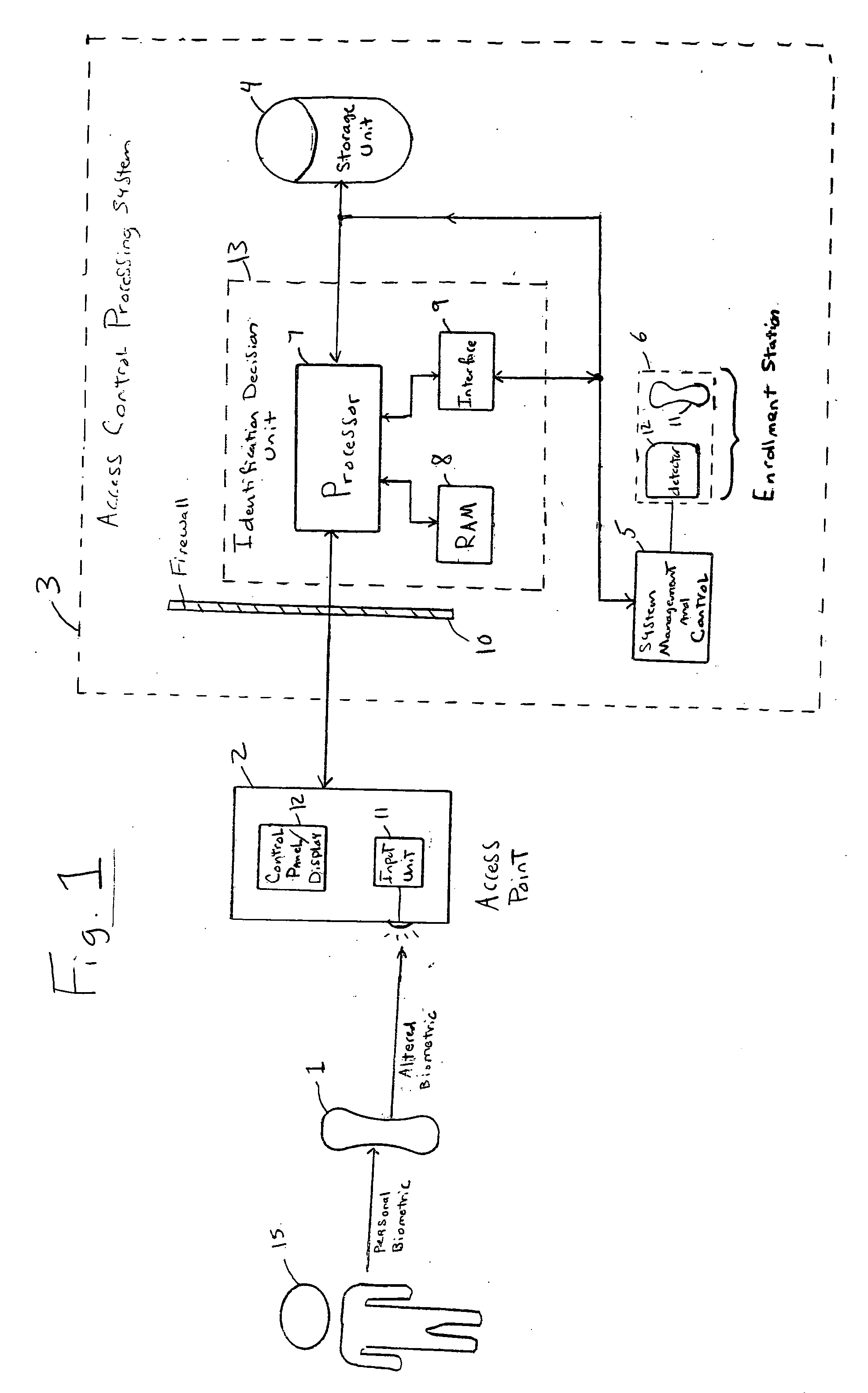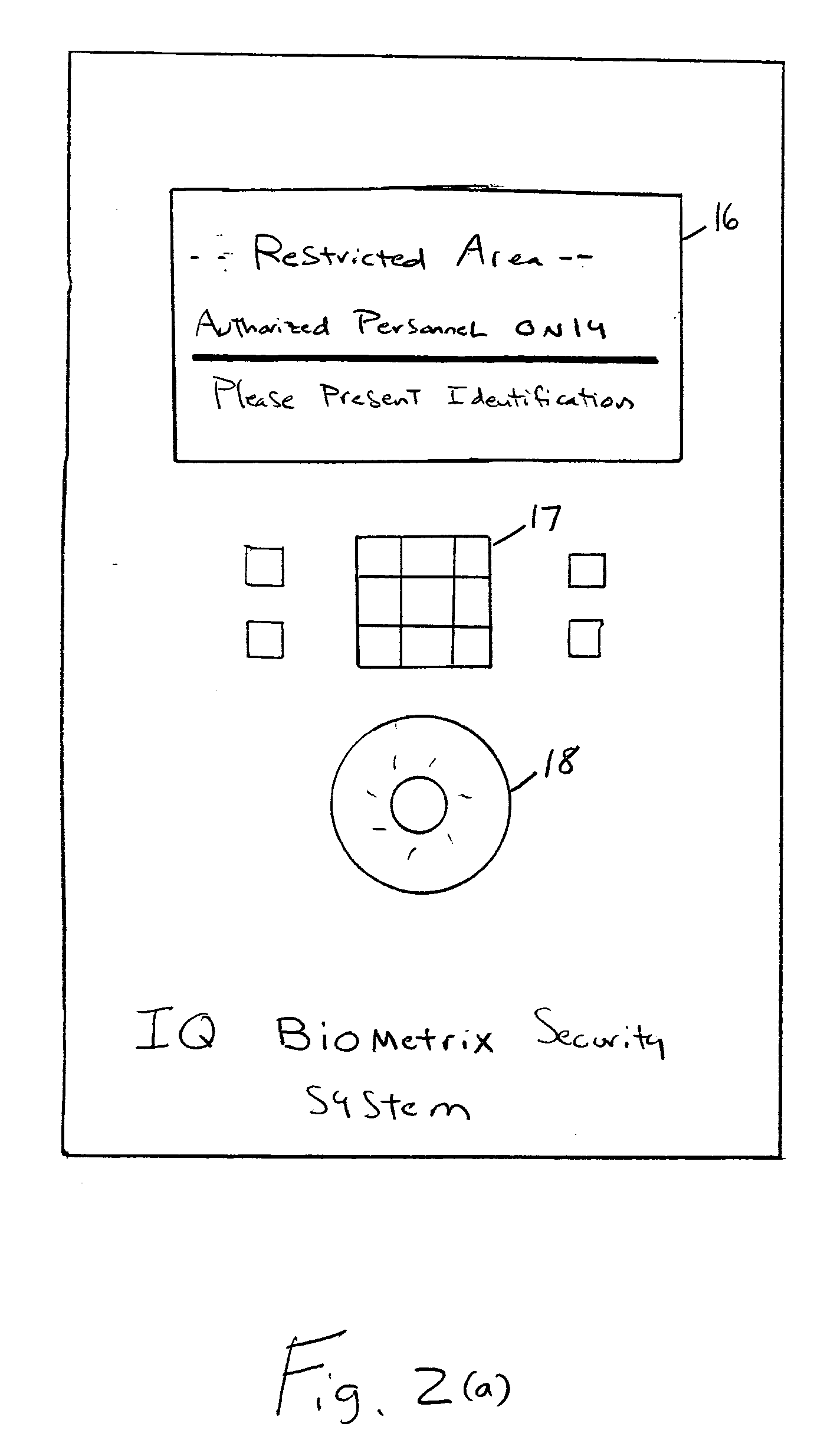System and method for performing security access control based on modified biometric data
a biometric data and access control technology, applied in the field of control systems, can solve problems such as system security breaches using stolen biometric data, inaccurate existing biometric systems, and inability to achieve positive identification results, and achieve greater security. the effect of system security and the inability to breach
- Summary
- Abstract
- Description
- Claims
- Application Information
AI Technical Summary
Benefits of technology
Problems solved by technology
Method used
Image
Examples
Embodiment Construction
[0035] The present invention is a system and method for controlling access to one or more restricted areas, systems, or other secured items of interest based on the identification of biometric data which has been altered, modulated, encoded, or otherwise distorted prior to input into the system. The restricted areas include buildings, rooms, or any other location where access is to be controlled, e.g., private residences, companies, public / private facilities including plants, military bases, laboratories, police crime labs, etc. Restricted systems include computers (e.g., main frames, desktops, portables including PDAs and notebooks), computer networks (e.g., Internet-based systems, ones performing e-commerce transactions and on-line banking), financial systems (e.g., ATMs, ones performing credit-card-based transactions), communication systems used in the public and private sector, as well as other system for which restricted access is sought or deemed to be desirable.
[0036]FIG. 1 ...
PUM
| Property | Measurement | Unit |
|---|---|---|
| area | aaaaa | aaaaa |
| areas | aaaaa | aaaaa |
| resilience | aaaaa | aaaaa |
Abstract
Description
Claims
Application Information
 Login to View More
Login to View More - R&D
- Intellectual Property
- Life Sciences
- Materials
- Tech Scout
- Unparalleled Data Quality
- Higher Quality Content
- 60% Fewer Hallucinations
Browse by: Latest US Patents, China's latest patents, Technical Efficacy Thesaurus, Application Domain, Technology Topic, Popular Technical Reports.
© 2025 PatSnap. All rights reserved.Legal|Privacy policy|Modern Slavery Act Transparency Statement|Sitemap|About US| Contact US: help@patsnap.com



